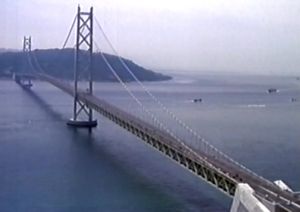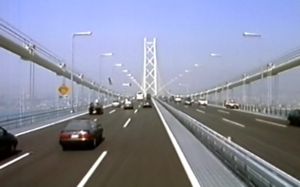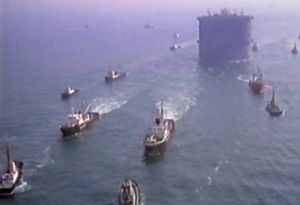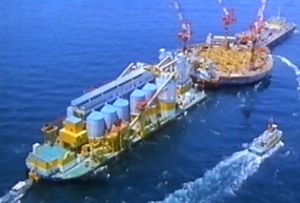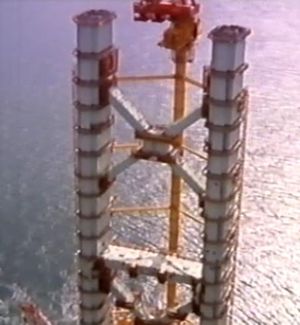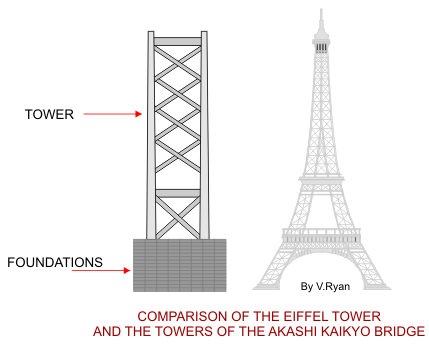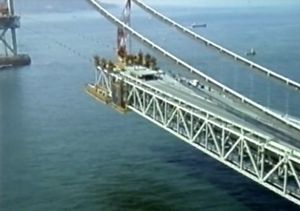Logistics and support for New Zealanders going to Antarctica are provided by Antarctica New Zealand. Although based in Christchurch, Antarctica New Zealand operates NZ's Scott Base, which is located on Ross Island in McMurdo Sound. The US base, McMurdo Station, is also on Ross Island, and members of the NZ and US programmes share flights to Antarctica. Anyone going to Antarctica must first pass a thorough medical and dental checkup.
Getting There
Travel to Antarctica is by either sea or air. Most people fly, and up to 5 flights a week may leave NZ from the International Antarctic Centre terminal in Christchurch each summer. Early in the season large cargo planes (Galaxies and Starlifters from the US) transport cargo and people to Antarctica. Planes land on a sea-ice runway but as the weather warms, the ice weakens and the big planes are replaced by smaller Hercules. When the sea-ice becomes too thin for the Hercules to land safely, a runway is made on the permanent ice of the Ross Ice Shelf. Special US Hercules equiped with skis then carry out all the flights between NZ and McMurdo.
 The RNZAF (NZ airforce) flies wheeled Hercules. The journey to Antarctica in these planes is very exciting. They are quite old and noisy but are renowned for their cargo-carrying capacity and ability to take-off and land on short runways. A Hercules has 4 large engines and is able to land safely even if 3 of them fail!
The RNZAF (NZ airforce) flies wheeled Hercules. The journey to Antarctica in these planes is very exciting. They are quite old and noisy but are renowned for their cargo-carrying capacity and ability to take-off and land on short runways. A Hercules has 4 large engines and is able to land safely even if 3 of them fail!
Passengers must wear full survival clothing, so you can get quite hot during the 6 to 7 hr journey! The planes are not built for comfort; there is not much room, and passengers sit side-by-side in rows of webbing seats. It's hard to see out of the few tiny windows and there's only one basic toilet at the back.
Just past ?way is the point of no return; there's enough fuel to get to McMurdo Sound, but not back home! (Planes will quite often turn back before this point if conditions become unsuitable for landing in Antarctica.)
Scott Base
 Situated at the southern end of Ross Island, Scott Base is right next door to the United States base, McMurdo Station. Consisting of a number of green-painted buildings linked by all-weather corridors, the building of the base first began in 1957. More buildings have been added over the years and now up to 100 people can be accommodated, along with the kitchen, workshops, laboratories, storerooms and other work spaces that support them. Each building is like a large fridge, except it keeps the cold out not in! It's a comfortable and friendly place with plenty to do, and all the mod cons of home. There is a shop, library, sauna, bar, and a social club that organizes special activities and functions including sporting (e.g. skiing) and cultural events. These facilities are especially important for the dozen or so hardy souls who over-winter through the dark months of June and July.
Situated at the southern end of Ross Island, Scott Base is right next door to the United States base, McMurdo Station. Consisting of a number of green-painted buildings linked by all-weather corridors, the building of the base first began in 1957. More buildings have been added over the years and now up to 100 people can be accommodated, along with the kitchen, workshops, laboratories, storerooms and other work spaces that support them. Each building is like a large fridge, except it keeps the cold out not in! It's a comfortable and friendly place with plenty to do, and all the mod cons of home. There is a shop, library, sauna, bar, and a social club that organizes special activities and functions including sporting (e.g. skiing) and cultural events. These facilities are especially important for the dozen or so hardy souls who over-winter through the dark months of June and July.
Each year Scott Base is the centre from which up to 70 different events are organized — not easy when one considers the logistics of coordinating personnel, travel, food, shelter, training, communication and safety in a harsh environment. In the 2001/02 summer, for example, a variety of research events on fish, glaciers, microbes, lichens and mosses, marine invertebrates, penguins, the dry valleys, climate, Antarctic soils, seals, ice, geomagnetism, algae and historic sites took place.
Antarctic Field Training
 Before going into the field, all visitors to the ice must participate in a 2-day Antarctic Field Training (AFT) course. Qualified instructors take newcomers through the skills of assembling tents, building snow caves, mountain and ice travel, first aid, cooking, radios, survival bags, keeping warm and safe, etc.
Before going into the field, all visitors to the ice must participate in a 2-day Antarctic Field Training (AFT) course. Qualified instructors take newcomers through the skills of assembling tents, building snow caves, mountain and ice travel, first aid, cooking, radios, survival bags, keeping warm and safe, etc.
It's a good feeling when the training and preparation are complete, and a research party with all their gear can leave for the study site.
Transport into the field
Depending on the weather, terrain and distance to be covered, several means of transport are possible.
- Walking
- Skiing
- 4WD vehicle
- Skidoo (snowmobile)
- Argo (a smaller 8-wheeled amphibious vehicle)
- Hagglund (a tracked vehicle that can carry up to 13 people)
- Sledges (various sizes and designed to be towed behind another vehicle)
- Twin Otter (a fixed-wing aircraft)
- Helicopter
Life in the field
Scientists working at sites remote from Scott Base need to set up camp. There may be a permanent building (hut) at the site, or Scott Base may organise that a temporary building is towed to the site (wannigan). At sites where there are no buildings, scientists set up a tent camp.
Field Camp
 Our reasearch is carried out at Cape Bird. Cape Bird is a narrow strip of stony coastline at the foot of Mt Bird in the NW corner of Ross Island. Here Antarctica NZ have built a comfortable 8-person hut that is in constant use by scientists over the summer months. The hut consists of 2 bunkrooms, a kitchen/dining room, pantry, storeroom and laboratory all kept warm by a diesel heater that never stops. Securely anchored down with wire ropes, the hut is designed to withstand the frequent blizzards and winds that sweep up the coast. The ever-changing view from the living room windows looks westwards across McMurdo Sound to the trans-Antarctic mountains in the distance.
Our reasearch is carried out at Cape Bird. Cape Bird is a narrow strip of stony coastline at the foot of Mt Bird in the NW corner of Ross Island. Here Antarctica NZ have built a comfortable 8-person hut that is in constant use by scientists over the summer months. The hut consists of 2 bunkrooms, a kitchen/dining room, pantry, storeroom and laboratory all kept warm by a diesel heater that never stops. Securely anchored down with wire ropes, the hut is designed to withstand the frequent blizzards and winds that sweep up the coast. The ever-changing view from the living room windows looks westwards across McMurdo Sound to the trans-Antarctic mountains in the distance.
Food
Along with shelter and warmth, having enough to eat and drink is the most important requirement for anyone working in Antarctic.
Special efforts are made to ensure that plentiful supplies of wholesome and, where possible, fresh foods are provided. Diets are not unlike what we'd expect at home and the quantity and variety may even be better; a big difference from the situation in the early days of Antarctic exploration! Today, several base stations even have their own hydroponically grown vegetables.
In summer, workers in the field can look forward to occasional helicopter deliveries of fresh vegetables, fruit and frozen meat. When tenting, food is cooked using small fuel burners; larger gas cookers are used in huts.
Water
Because it never rains in Antarctica, drinking water must be obtained either from the sea, (in which case the salt must be removed in an energy-consuming reverse-osmosis process), or by melting snow or ice. One of the chores in the field is the need to collect and melt snow for drinking, cooking and washing.
Grey water (so called because of the colour of the water after it has been used for washing and cleaning), is collected and retrograded (returned) to Scott Base for disposal.
Surprisingly, the dry conditions in Antarctica mean that fire is a real risk, and a reserve supply of water must also be kept for fire-fighting purposes.
Toilets
In larger, coastal, base stations, sewage is usually mascerated, filtered and then piped into the sea where it disperses and decomposes. In the field, body waste is collected and retrograded to Scott Base for disposal.
Communication
Living in an Antarctic field camp for any length of time can make scientists feel very isolated from the outside world. Radio links with other camps, base stations or home are a vital means of communication on the ice.
Both VHF (very high frequency) and HF (high frequency) battery-powered radios are used. Solar panels keep the batteries charged. VHF radios are used for line-of-sight communication over shorter distances. Repeater stations may be used when there is a physical obstruction like a mountain in the way! HF radios can be used to communicate with anyone else in the world. Signals are bounced off the ionosphere 50 to 100 km above the earth. Reception can be severely disrupted in times of sunspot activity however!
 Bodie ghost town on the eastern slope of the Sierra Nevada mountain range in Mono County, California, United States, about 75 miles (120 km) southeast of Lake Tahoe, at an elevation of 8369 feet (2550 m).
Bodie ghost town on the eastern slope of the Sierra Nevada mountain range in Mono County, California, United States, about 75 miles (120 km) southeast of Lake Tahoe, at an elevation of 8369 feet (2550 m).  In 1876, the Standard Company discovered a profitable deposit of gold transformed Bodie from an isolated mining camp of few prospectors to a boomtown.
In 1876, the Standard Company discovered a profitable deposit of gold transformed Bodie from an isolated mining camp of few prospectors to a boomtown. 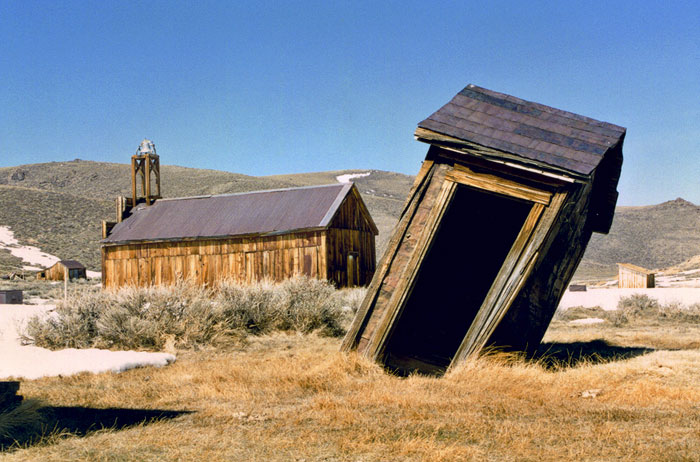 Gold bullion from the town's nine stamp mills was shipped to Carson City, Nevada accompanied by armed guards. Once the bullion reached Carson City, it was sent by rail to the San Francisco mint.
Gold bullion from the town's nine stamp mills was shipped to Carson City, Nevada accompanied by armed guards. Once the bullion reached Carson City, it was sent by rail to the San Francisco mint.  In 1893 the Standard Company built its own hydroelectric plant, located approximately 13 miles away on Green Creek, above Bridgeport, California. The plant developed a maximum of 130 horsepower and 6,600 volts alternating current to power the company's 20-stamp mill. This pioneering installation was one of the first times an electric motor was operated over long-distance power lines.
In 1893 the Standard Company built its own hydroelectric plant, located approximately 13 miles away on Green Creek, above Bridgeport, California. The plant developed a maximum of 130 horsepower and 6,600 volts alternating current to power the company's 20-stamp mill. This pioneering installation was one of the first times an electric motor was operated over long-distance power lines. 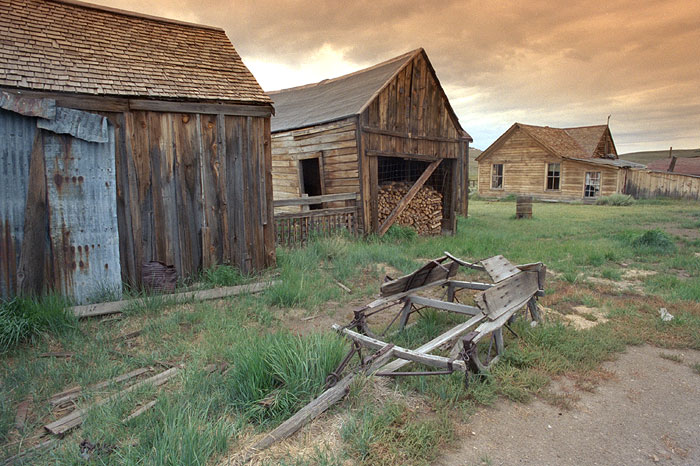 Bodie's Chinatown, had several hundred Chinese residents at one point. The Chinese workers earned their incomes mainly from selling vegetables, operating laundries, and cutting, hauling, and selling firewood. Winter temperatures in Bodie would often fall well below zero, and winds reaching nearly 100 miles per hour would sweep across the high open valley. Large amounts of firewood were needed to keep residents warm through the long winters. Many ill-prepared towns folk perished during the extremely harsh winter of 1878-1879.
Bodie's Chinatown, had several hundred Chinese residents at one point. The Chinese workers earned their incomes mainly from selling vegetables, operating laundries, and cutting, hauling, and selling firewood. Winter temperatures in Bodie would often fall well below zero, and winds reaching nearly 100 miles per hour would sweep across the high open valley. Large amounts of firewood were needed to keep residents warm through the long winters. Many ill-prepared towns folk perished during the extremely harsh winter of 1878-1879.  Today Bodie is an authentic, intact ghost town. Bodie is currently a State Historic Park. Visitors walk the deserted streets of a town that once had a population between 7,000 and 8,000 people. Interiors remain as they were left and in some cases stocked with goods. The remains of Bodie are being preserved in a state of arrested decay...
Today Bodie is an authentic, intact ghost town. Bodie is currently a State Historic Park. Visitors walk the deserted streets of a town that once had a population between 7,000 and 8,000 people. Interiors remain as they were left and in some cases stocked with goods. The remains of Bodie are being preserved in a state of arrested decay...
















